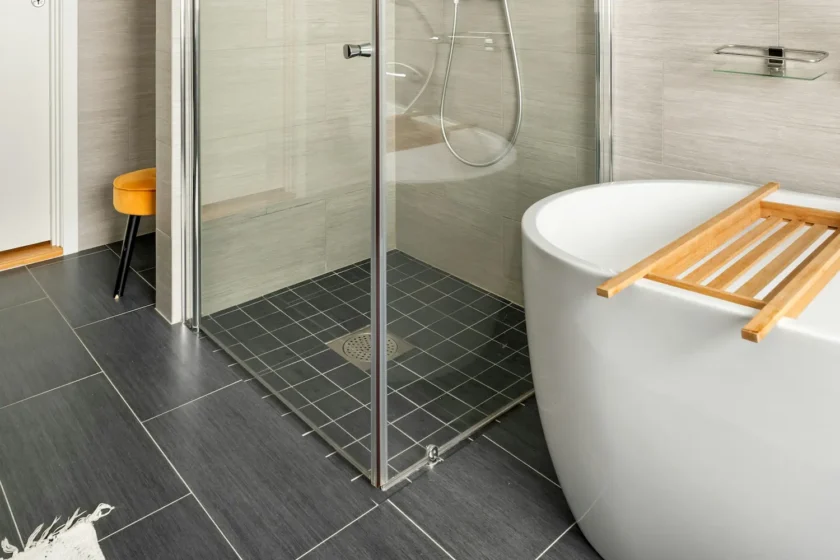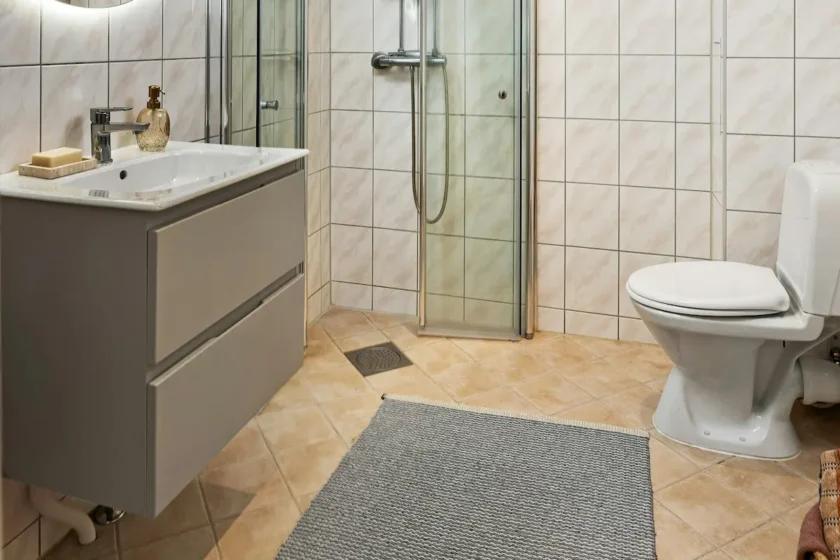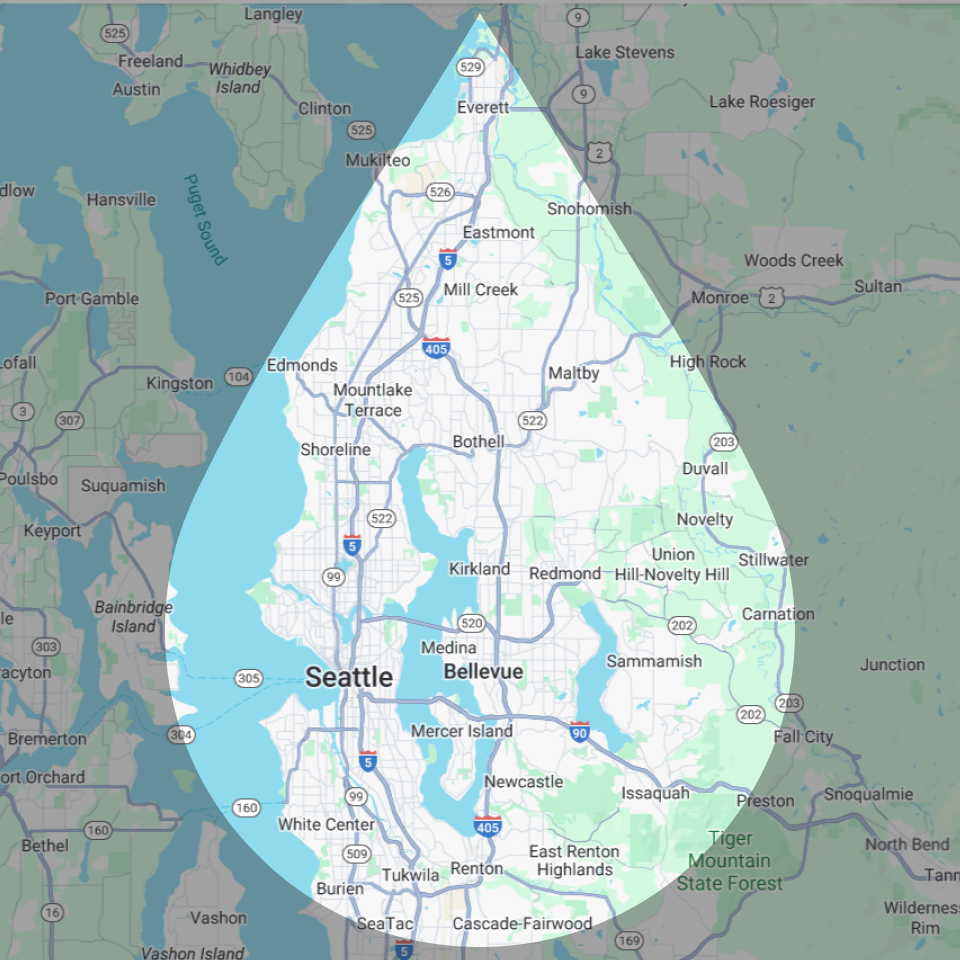A spotless shower can still have an embarrassing problem: a smell coming from the shower drain even though water flows freely. When there’s no clog but the odor lingers, the culprit is usually biofilm, a dry or faulty trap, or a venting issue—not a blockage. Below you’ll learn what the different smells mean, how to clean and deodorize a smelly shower drain safely, when to try natural remedies, and how traps and vents keep odors out in the first place. We’ll finish with simple prevention habits and clear guidance on when to call a professional.
What Causes Bad Smells from the Shower Drain
Not every odor points to a blocked line. In many homes the water drains fine, yet microbes or airflow problems let smells sneak back into the room. Thinking in terms of “mechanical vs. biological” sources helps you choose the right fix.
Mechanical causes include a dry P-trap (no water seal), a loose joint that lets gases leak, or a vent stack that can’t breathe. Biological causes come from biofilm—that mix of soap, oils, and skin cells—plus mildew that thrives under the grate. Sometimes both happen together: a thin film grows in the upper pipe while a weak water seal allows sewer gases to slip past.
A quick walkthrough of the usual suspects:
- Dry or faulty trap. The P-trap’s water seal is your odor shield. If a guest bath goes unused or a joint weeps, the water evaporates and sewer gases enter the room. Topping up the trap with water (and checking for leaks) often restores the seal instantly.
- Biofilm buildup. Even with clear flow, a sticky ring inside the first few inches of pipe can host odor-producing bacteria. The smell reads as musty, sour, or “old shampoo.”
- Mildew around the cover. Moisture trapped under the drain grate supports surface mildew. Cleaning only the floor tiles won’t touch this hidden growth.
- Blocked or undersized vent. When the vent can’t equalize pressure, air pulls through the nearest trap and carries odor with it. Roof-level blockages (debris, nests) are common in older homes.
- Sewer line or connection problems (less common). Cracked traps, loose couplings beneath the pan, or a failing main can all transmit odor without creating a visible clog.
Bottom line: if smells fade right after you run water, think dry trap. If they return quickly after cleaning the cover, think biofilm. If odors worsen after long showers or on windy days, think venting.
How to Identify the Type of Odor
Odor “tone” is surprisingly diagnostic. Use these cues to narrow your target, then choose the matching fix.
- Rotten eggs / sulfur: often hydrogen sulfide from bacteria in biofilm or, less often, sewer gas escaping past a weak water seal.
- Musty / damp towel: typical of mildew under the grate or on the upper pipe wall.
- Raw sewage: points to a dry P-trap or venting trouble that’s pulling gases up from the stack.
- Chemical or sharp: cleaning residues reacting with organic film; a thorough rinse usually clears it.
If the bathroom sits unused and smells strongest at the first morning shower, a dry trap is likely. If odor appears during every shower but not between showers, pressure changes from poor venting are a better bet.

How to Clean and Deodorize a Smelly Shower Drain
Start with a targeted clean of the “splash zone”—the first few inches below the grate—because that’s where most odor lives. You’ll remove film, disrupt bacteria, and reset the water seal. Take it step by step so each action has a purpose.
Step-by-Step Guide
Begin by making the area safe to work on and gathering simple tools (screwdriver, plastic hair snake, cup, old toothbrush, dish soap, white vinegar, baking soda, a kettle of hot—not boiling—water, and gloves). Then move through these stages:
- Lift and wash the grate. Remove the cover carefully and soak it in hot, soapy water. Scrub both sides; soap film under the rim is a common odor source.
- Remove hair and sludge. Use a plastic drain snake or a hooked zip tie to pull out strands and goo near the opening. Flow can be normal while this gunk still holds smell.
- De-film the upper pipe. Sprinkle ½ cup baking soda into the drain, then add ½–1 cup white vinegar slowly. Let it fizz for 10–15 minutes to soften biofilm on the walls.
- Flush with hot water. Pour a kettle of hot (not boiling) water to rinse loosened residue. This heat step makes the cleaning last by clearing softened film.
- Detail the rim. Brush the visible pipe and underside of the cover with vinegar or dish-soap solution. Rinse again and reinstall the grate.
After you finish, run the shower briefly and sniff-check. A clean, neutral smell tells you the biofilm step worked. If odor lingers, move to the remedies below.
Natural Remedies That Work
Green methods can keep light odor at bay between deep cleans. They won’t fix structural issues, but they’re excellent maintenance.
- Baking soda + vinegar, monthly. Gentle, safe for most systems, and good at disrupting fresh biofilm.
- Enzyme cleaners, per label. These biologically “eat” organic waste without harsh chemicals—useful for showers with heavy product build-up.
- Citrus rinse. A splash of lemon juice after cleaning adds mild deodorizing and helps cut residual oils.
Use one method consistently, not all at once. Overlapping products can cancel each other or create odd smells of their own. If a natural routine helps only for a day or two, you’re likely dealing with a dry trap or vent imbalance rather than surface film.
Options for Persistent Smells
When basic cleaning doesn’t hold, diagnose the seal and airflow next. A few quick checks can save a lot of guesswork:
- Confirm the water seal. Shine a flashlight into the drain; you should see a small water lens sitting in the trap. If it’s low or absent, pour a quart of water to reseal. For rarely used baths, add a tablespoon of mineral oil after water—this slows evaporation.
- Look for weeps. If there’s access from below, inspect the trap for a tiny drip that slowly drains the seal. Even a pinhole can let gas pass.
- Listen for gurgles. Gurgling at nearby fixtures while the shower drains hints at vent problems. That pressure swing can pull water out of the trap.
- Escalate smartly. If the smell returns within days despite a full seal and a clean rim, book a camera inspection and vent check; it’s the fastest way to find a cracked trap, misaligned connection, or blocked vent stack.
Preventing Future Shower Drain Odors
- Staying ahead of smells is easier than repeatedly scrubbing them away. Make odor control part of your regular bathroom routine, with a short habit loop and a few smart upgrades.
- Begin with hair control. A simple strainer catches the feedstock for biofilm before it ever reaches the pipe. Clean the screen into the trash (not the drain) and wipe the underside of the grate weekly so film can’t take hold. Follow with a hot-water rinse after product-heavy showers; a quick 30–60-second flush helps dissolve fresh oils.
- Layer in one monthly maintenance step. Either do a baking-soda-and-vinegar flush or use a labeled enzyme product—don’t combine them. This small routine keeps the upper pipe fresh and reduces how often you need to do deep cleans.
- Finally, protect the trap seal. For guest baths or seldom-used showers, run water for 15–30 seconds every couple of weeks. Where access exists, insulate cold sections below the floor to slow evaporation during cool seasons. If you’ve had vent-related issues, ask a pro about adding or improving venting so pressure changes can’t siphon water out of the trap.
Result you should expect: a neutral-smelling shower, steady water seal, and cleaning sessions that last rather than a cycle of quick fixes.
When to Call a Professional
DIY steps resolve most odor complaints. Call a plumber when any of these patterns show up, because they point to causes beyond the surface:
- Odor returns within days despite a thorough clean and a confirmed, full trap.
- Gurgling or bubbling appears in nearby fixtures while the shower drains (classic venting symptom).
- Sewage smell after rain or strong winds—often a rooftop vent or main-line issue.
- Access shows moisture around the trap or joints, suggesting a slow leak that lowers the seal.
- Multiple bathrooms develop similar odors at the same time.
A professional can remove shower drain odor at the source by scoping the line, checking the vent stack, resealing or replacing a compromised trap, and clearing hidden biofilm deeper in the branch. The goal isn’t to mask the smell—it’s to eliminate the pathway that allows it.
When the shower still smells bad but isn’t clogged, bring in local experts who handle both cleaning and diagnostics. For fast, effective help in Seattle, schedule professional drain cleaning and odor diagnostics with Ben’s Plumbing. We’ll isolate the cause—biofilm, trap, or vent—then fix it for good so your bathroom stays fresh.
Please Click to Call or Fill out our Contact Form Here



